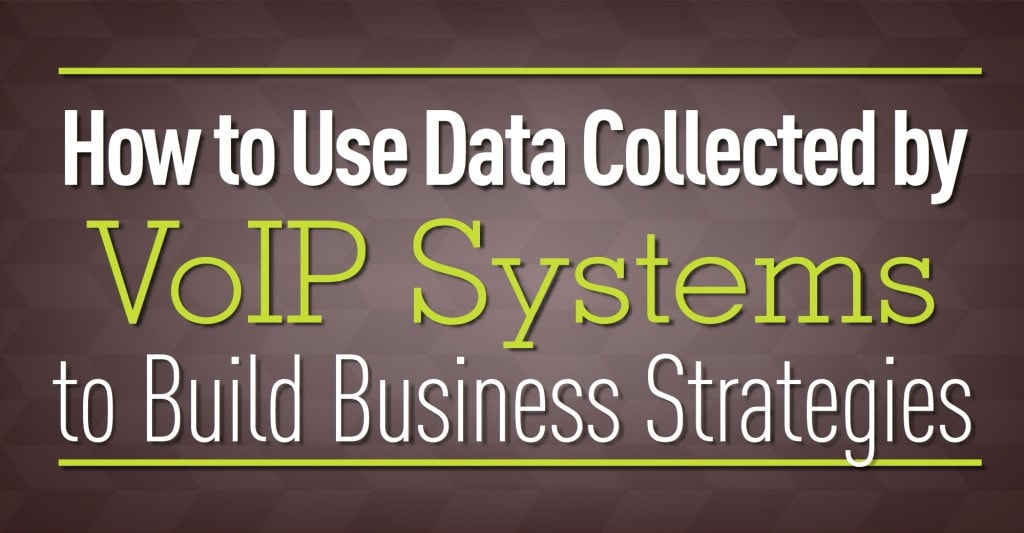The Untapped Business Intelligence in Your VoIP Phone System
While 87% of businesses use data analytics for strategic decision-making, many overlook a powerful source of business intelligence: their phone systems. Voice over Internet Protocol (VoIP) technology doesn’t just modernize communication—it transforms every call into actionable data that can drive revenue growth, optimize staffing, and enhance customer experiences. Unlike the public switched telephone network (PSTN), which operates using circuit switching for calls, VoIP uses packet-switching technology, making it a more efficient method of communication.
VoIP fundamentally converts voice communications into structured data that flows through computerized systems capable of comprehensive tracking and analysis. Unlike traditional phone systems, VoIP creates a rich dataset that organizations can leverage for strategic decision-making across departments.
Key VoIP Data Metrics That Drive Business Decisions
Modern VoIP systems capture detailed metrics that provide unprecedented visibility into communication patterns:
- Call duration and frequency analysis down to the second
- Call routing and transfer pathways throughout your organization
- Geographic distribution of incoming calls
- Peak call volume times by hour, day, and season
- First-call resolution rates for service teams
- Response and hold times across departments
- Prioritization of voice traffic to ensure call quality by preventing latency and jitter
These data points become particularly valuable for service-oriented businesses handling substantial call volumes. Healthcare providers, insurance agencies, and customer service departments can use this information to identify patterns and optimize operations.
Real-Time Data Access and Reporting Capabilities
One significant advantage of modern VoIP systems is the accessibility of data. Network address translation (NAT) devices can impact the quality of VoIP data transmission, potentially causing communication issues. Therefore, a stable network infrastructure is crucial to ensure optimal VoIP performance. Customers have secure, 24/7 access to their call analytics through user-friendly dashboards. This democratizes data across the organization, enabling teams to make informed decisions without specialized technical knowledge.
VoIP reporting typically includes:
- Pre-configured reports for common business needs
- Custom report builders for specific business queries
- Raw data export options for integration with other business intelligence tools
- Real-time dashboards for monitoring current activity
For example, a healthcare practice manager can quickly pull reports showing call volume by hour to determine optimal staffing levels, while a sales director might analyze call duration patterns to identify successful conversation techniques.
Transforming Voice Over Internet Protocol Data into Strategic Business Initiatives
For Marketing Teams:
Geographic call origin data allows marketers to target high-response regions more effectively. VoIP providers offer features that can enhance marketing strategies through detailed call analytics. When combined with advertising efforts, VoIP data creates powerful attribution models.
Practical Application: A plumbing company running radio advertisements can assign unique phone numbers to different campaigns, then measure call volume by number to determine which ad messaging generates the most qualified leads.
For Sales Leadership:
Call analytics provide objective performance metrics that illuminate best practices and training opportunities across sales teams. Setting up a VoIP network for sales teams is straightforward, with VoIP phones being easy to connect and requiring specific equipment designed for this type of network.
Practical Application: Analysis of successful sales calls might reveal that prospects who engage in conversations lasting more than three minutes convert at twice the rate of shorter calls, guiding training for improved qualification techniques.
For Operations Management:
Call pattern data supports evidence-based staffing decisions and infrastructure planning. VoIP works by transforming voice into digital data packets and transmitting them over the Internet.
Practical Application: Call center managers can identify precise peak periods—perhaps Tuesday mornings between 9-11 AM show consistently higher volume—and adjust staffing accordingly, reducing both wait times and overhead costs.
For Customer Experience Enhancement:
Transfer patterns and resolution rates highlight potential friction points in customer journeys.
Practical Application: Analyzing voice call data can help identify and address customer service issues. When data shows that 40% of support calls require transfers to a second department, organizations can develop cross-training programs to improve first-call resolution rates.
How to Kickstart Your VoIP Data Strategy Implementation
To maximize the value of your VoIP data:
- Identify key business questions your organization needs to answer
- Ensure a stable broadband internet connection as it is fundamental for utilizing VoIP technology effectively
- Configure dashboards that highlight relevant metrics for different departments
- Establish baseline measurements before implementing changes
- Set measurable goals for improvement in specific areas
- Schedule regular reviews to assess progress and refine strategies
The competitive advantage comes not just from collecting data, but from systematically applying insights to business operations. Organizations that integrate VoIP analytics into their decision-making processes typically see measurable improvements in efficiency and customer satisfaction within the first quarter.
FAQ: VoIP Data Analytics
Q: How quickly can we access call data after implementation?
A: Call data is typically available immediately after call completion, with dashboards updating in real-time.
Q: Can VoIP data integrate with our existing CRM system?
A: Yes, most enterprise VoIP solutions offer API integration capabilities with major CRM platforms, creating unified customer interaction records.
Q: Are there privacy concerns with call recording?
A: Call recording features include customizable disclosure notifications and secure storage options to maintain compliance with applicable regulations.
Q: What are the benefits and features of a VoIP service for businesses?
A: A VoIP service facilitates calls over the internet, offering a cost-effective alternative to traditional phone systems. It provides additional features such as call forwarding, voicemail to email, and video conferencing. Choosing the right service provider ensures compatibility with existing equipment and a reliable connection, enhancing overall business communication.
Elevate Your Business Communications Strategy
Ohio.net provides advanced VoIP solutions with integrated data analytics capabilities for businesses across healthcare, automotive, insurance, and service industries. Contact our team for a personalized demonstration of how VoIP data can transform your business strategy.


